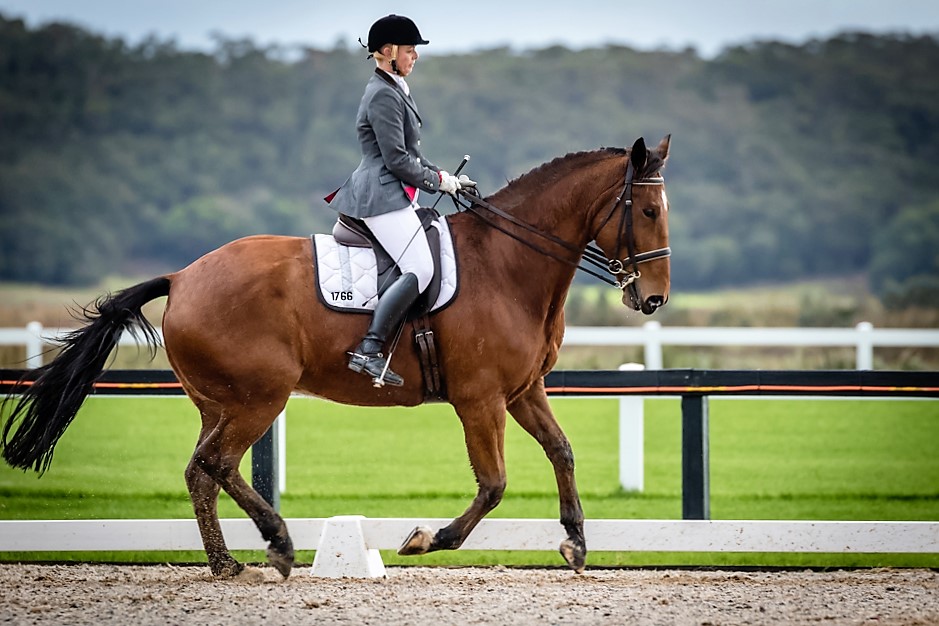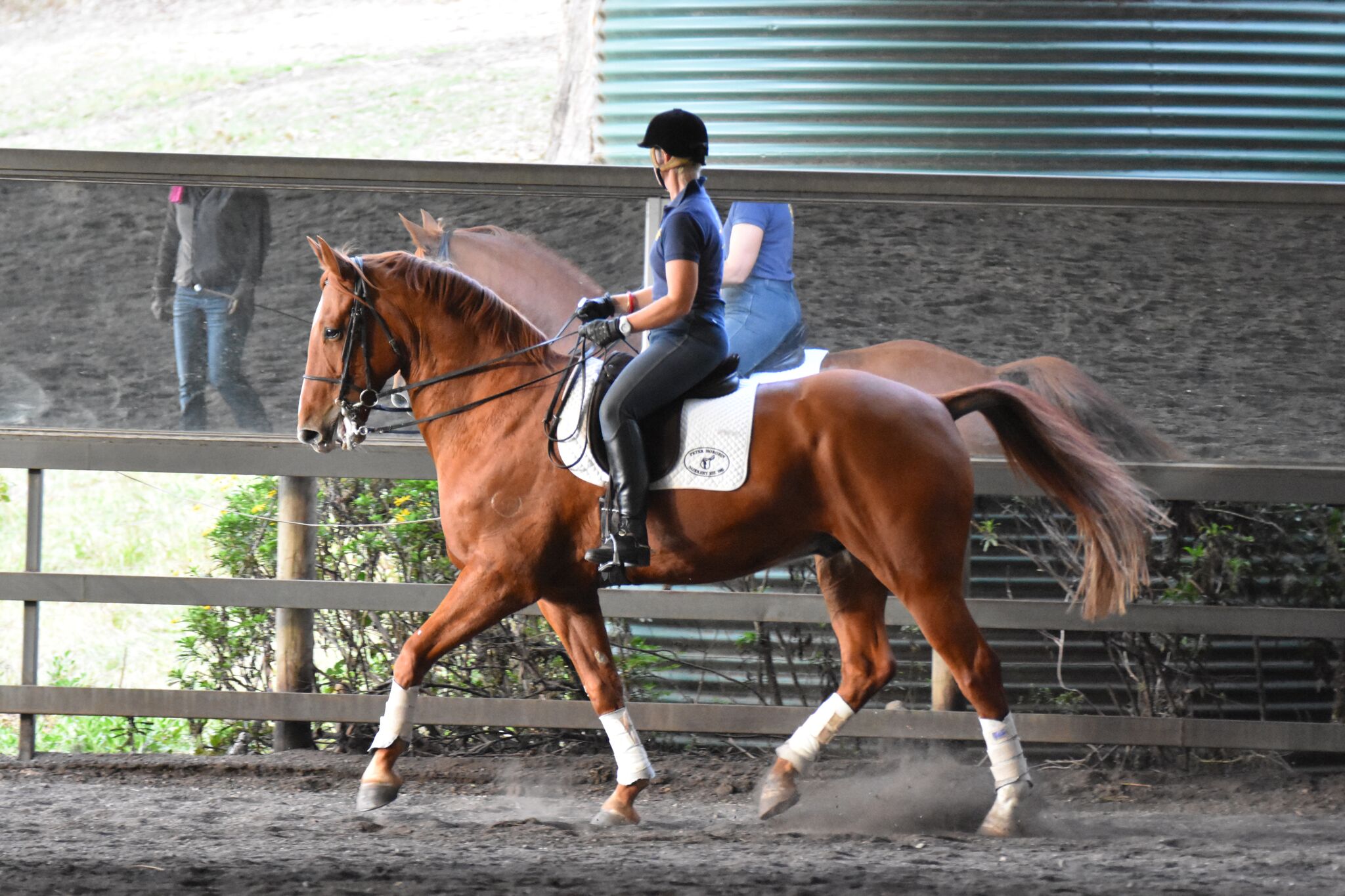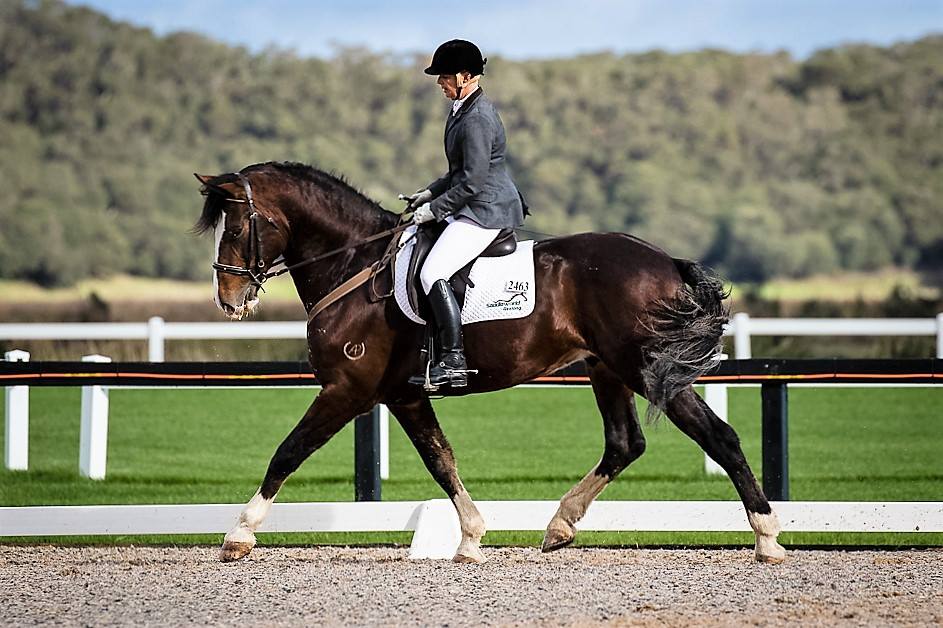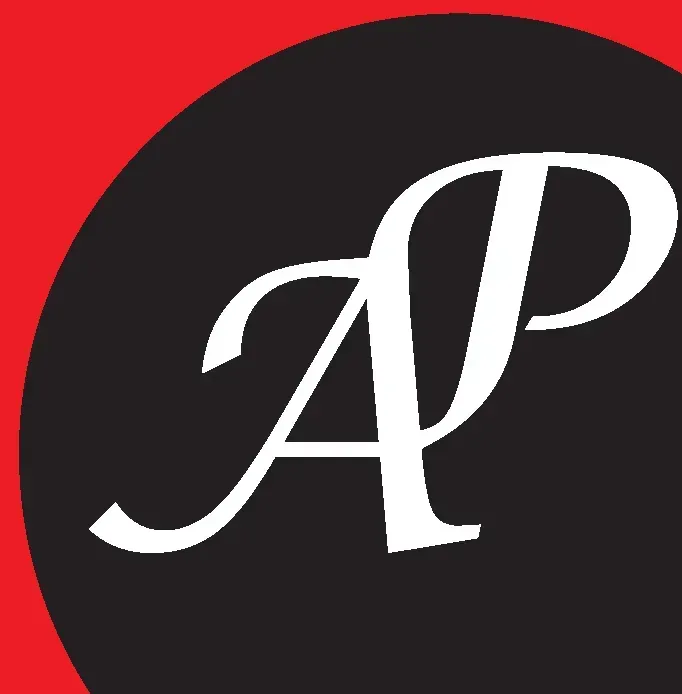Understanding Contact: Connection Through Feel, Not Force
When we talk about “contact” in horse riding, it often sparks a range of reactions — confusion, anxiety, or even frustration. Is the horse on the bit? Should the poll be the highest point? Is the nose behind or in front of the vertical? Are we holding too much, or not enough?
The truth is, “contact isn’t about where the horse’s head is.” It’s about “the quality of the connection between the rider’s elbow and the horse’s mouth” — a soft, elastic, living line of communication. A good contact doesn’t pull, doesn’t drop and certainly doesn’t force a frame. It’s a dynamic, responsive feel, built on balance, education and mutual trust.
Let’s take a closer look at what real contact is, how it should feel, and why developing “independent arms” is a crucial piece of the puzzle for both rider and horse.

What Contact Actually Is (And Isn’t)
Let’s start by clearing up a common misconception: “contact is not about pulling the horse’s head into position.”
True contact is the connection that runs from the “rider’s elbow”, through a softly following “forearm, wrist and fingers”, down the reins and into the “horse’s mouth”. In return, the horse, with correct training and balance, learns to “reach onto the bit” with a soft jaw, lifting through their back, pushing from behind and working in harmony.
So much emphasis is often placed on “where the horse’s head is”, when in reality, the “quality of the connection” is what really matters.
A horse can be in a lovely shape and still be behind the contact. A horse can have their nose slightly in front of the vertical and still be in beautiful self-carriage.”The key is that both horse and rider are *meeting in the middle* — neither one pulling, leaning, or ducking the conversation.”
The Rider's Role in Contact – It Starts at the Elbow
For contact to feel good and function well, the “rider must have an elastic, following arm”. This means the shoulder is stable, the elbow soft and mobile and the wrist relaxed. If the elbow locks, the hand pulls or the wrist stiffens, the contact becomes static — and that’s when the problems start.
Think of your elbow as the shock absorber in the system. When your horse lifts, lowers or stretches their head and neck, it’s your elbow that should quietly and smoothly follow, “maintaining a consistent feel without resistance or slack”.
This doesn’t mean your arms flop around. It means you’ve developed a “stable core” and “independent limbs”, so that your arms can move with the horse without affecting your seat or throwing your balance.
“The goal isn’t to hold a frame — it’s to hold a feel.”
---
Carrying Your Own Arms – Why It Matters
One of the most under-taught fundamentals in riding is this: It’s the rider’s responsibility to carry their own arms.
Sounds simple, but think about it. How many times do we see riders bracing through the arms, resting their hands on the horse’s neck, or using the reins to support their own balance?
This creates two problems:
1. It sends “inconsistent signals to the horse”, who now has to decipher whether a rein pressure is intentional or accidental.
2. It prevents “true independence of the seat”, which is essential for balanced riding.
A rider who carries their own arms with stability and lightness sends “clear, consistent and sympathetic communication” through the reins. The horse begins to trust the contact and seek it out, knowing that every change in pressure has meaning and intention — not just accidental noise.
Developing this skill takes time, body awareness and usually some honest feedback from an instructor.
But the payoff is huge:
better balance, clearer communication, and a more willing horse.

The Horse’s Role – Reaching, Not Retreating
On the horse’s side of things, contact should feel like an “invitation to reach”. When a horse is working correctly through their body — with engaged hindquarters, a lifted back, and a supple topline — they’ll “reach forward into the rider’s hand” with a soft, open poll and a relaxed jaw.
This reaching is a sign of:
**Relaxation
**Confidence in the bit
**Willingness to carry the rider
**Correct biomechanics
A horse that avoids the contact — by going above it, behind it, leaning on it or snatching at it — is telling us they’re not yet physically or emotionally comfortable in the connection.
That doesn’t mean we pull harder or “fix the head.” It means we go back to the basics — posture, rhythm, forward energy, and the rider’s seat — to “build” the conditions for good contact to develop naturally.
Elastic Contact – A Living, Breathing Connection
A good contact should feel “alive”. It’s not a fixed line — it’s a “dynamic, elastic connection” that adjusts moment to moment as horse and rider move.
Imagine riding through a stretchy rubber band between your elbows and the bit. That band should never go slack, nor should it become rigid. It flexes, stretches, and rebounds as needed, with both horse and rider responding to each other in real time.
Elastic contact gives you:
**Subtle communication
**Better timing for half halts
**The ability to follow the horse’s natural motion
**A more balanced and relaxed horse
It also helps the horse build “self-carriage” — the ability to hold their own posture and rhythm without relying on the rider’s hands for balance.
Contact Without Tension – The Sweet Spot
We want contact, not tension. This is a crucial distinction.
You can have a firm feel without it being harsh or restrictive. You can have a soft feel without it being vague or floppy. The sweet spot is somewhere in the middle — “clear, steady, and giving”.
Signs you’re in that sweet spot:
** The horse takes the rein forward and down without hesitation
** You can ride forward and back in the gait without losing the connection
** The jaw is mobile (chewing the bit softly), and the poll is relaxed
** Your reins feel “full”, but not heavy
** Your hands and arms feel “active”, but not busy
When contact is correct, “both horse and rider are free to move” — yet still remain connected. It’s that balance of freedom and unity that makes good contact so powerful.
Developing Good Contact – Practical Tips
1. “Start with the seat”
– Before you think about the hands, check that your seat is stable, your core is switched on, and your pelvis is following the motion.
2. “Focus on rhythm and forward energy”
– A horse can’t reach into the contact if they’re not going forward freely. Use rhythm, transitions and light leg aids to encourage push from behind.
3. “Let the elbows breathe”
– Imagine your elbows floating by your sides like soft springs. They should never brace or clamp in place.
4. “Ride into the contact, not with the hand”
– Don’t take the contact. Ride the horse *forward* into it and let them meet you there.
5. “Stretch often”
– Allow your horse to take the rein and stretch long and low regularly. This encourages confidence and teaches them to seek the bit.
6. “Stay quiet”
– Once you’ve found a steady feel, don’t fiddle or micromanage. Let the horse maintain the connection as long as they’re in balance.

What Good Contact Looks (and Feels) Like
Every horse is different, and so is every moment of training.
But good contact usually presents as:
* A horse reaching softly forward, not curling or poking out the nose
* A softly swinging back and lifted shoulder
* Even, full reins with no slack or dragging weight
* A balanced rider sitting tall with following arms
* Quiet mouths, mobile jaws, and a relaxed expression
And most importantly?
It feels easy. Like a conversation where you’re both being heard and no one’s shouting.
In Summary –
Contact is Connection, Not Control
At the end of the day, “contact is about connection”, not control. It’s the ongoing physical and mental conversation between horse and rider. It flows through the rider’s seat, through their core, along a soft and following arm and arrives in the horse’s mouth as an invitation — not a demand.
Developing good contact means:
* Learning to carry and control your own arms
* Riding from back to front
* Encouraging the horse to reach, not retreat
* Letting go of the obsession with head position
* Prioritising feel, softness and education over shape
When we ride with correct, elastic contact, we’re building a foundation of “trust, clarity and balance”. And from there, everything else – self-carriage, softness, lightness – can grow.
So next time you pick up the reins, take a moment to check in. Are you “inviting connection” or “chasing control”?
Let your elbow breathe, let your horse reach and remember -
